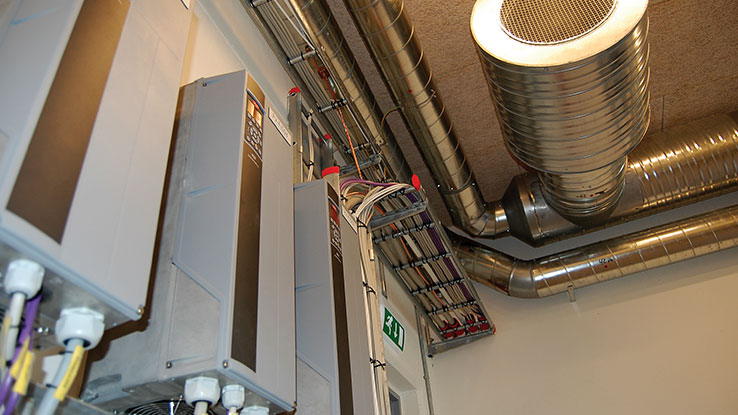 Since 2010, Marselisborg wastewater treatment plant has transformed its focus beyond minimising energy consumed, to maximising net energy surplus. Nowadays the facility has net production of both electricity and heat, supplying the district heating system in Denmark’s second-largest municipality, Aarhus. The carbon footprint has been reduced by 35 % accordingly.
Since 2010, Marselisborg wastewater treatment plant has transformed its focus beyond minimising energy consumed, to maximising net energy surplus. Nowadays the facility has net production of both electricity and heat, supplying the district heating system in Denmark’s second-largest municipality, Aarhus. The carbon footprint has been reduced by 35 % accordingly.
— WEDNESDAY, 17 DECEMBER 2014 BY DANFOSS POWER ELECTRONICS
Water and wastewater treatment facilities are normally the single largest electricity consumer for a municipality. Typically water and wastewater treatment processes account for 25 – 40 % of the municipal electricity consumption. The high consumption is related to the energy intensive processes but also its continuous operation cycle, 24/7 and 365 days annually.
Over the years focus has been on developing new processes and control strategies to reduce energy consumed per litre of water processed. However at the same time the increasing demands upon wastewater treatment quality, for example in nutrient removal, in turn increase net energy consumption.
Energy balance optimisationWater and wastewater treatment processes are characterised by high load variation during the 24 hour cycle and seasonally throughout the year. The use of frequency converters has therefore steady increased in order to control blowers, pumps and other motorised equipment, to adapt to the changing demand.
Since 2010 Aarhus Water has worked intensively together with water environment consultants to improve theenergy balance for Marselisborg wastewater treatment plant.
Key steps in the strategy:
These changes together with improvements including the effective co-production of electricity and heat based on methane gas extracted from the aerobic sludge digestion process have created the impressive results of:
130 % electricity production (30 % excess electricity)
Excess heat production of about 2.5 GWh/year
Frequency converters are installed on almost all rotating equipment at Marselisborg WWTP: blowers, pumps, mixers and dewatering pumps. The frequency converters allow the plant to adapt to load variations, with maximum flexibility. Over 100 motors are controlled by VLT® frequency converters at Marselisborg.

The vision for Aarhus City is to extend energy generation even further, to achieve surplus production of energy from its wastewater treatment plants so high, that it can also meet the energy requirement of the city’s potable water supply. This will transform the single largest electricity consumer for the authority into an energy-neutral party.
